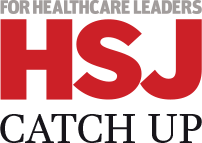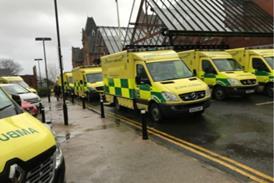Ingrid Torjesen reports on the award winning new care pathway, which uses a smartphone app for home monitoring of hypertension in pregnancy
Around one in 10 women will develop high blood pressure disorders that will require them to attend hospital a couple of times a week for blood pressure readings and urine testing in order to monitor for pre-eclampsia, a potentially life threatening condition for both mother and baby that affects 2-8 per cent of pregnancies.
Luckily, the majority of women with high blood pressure will not develop pre-eclampsia, but the need for repeated hospital visits is time consuming and creates anxiety for the women affected. Regular monitoring also takes up a lot of staff time.
“These women have to take time off work, they have to arrange childcare, and they have to pay for transport to come to hospital two or three times weekly,” explains Asma Khalil, consultant and reader in obstetrics and maternal foetal medicine at St George’s Hospital University in London.
Hospitals are also very short of midwives, and we realised that we could make their work more efficient by bringing only the patients to hospital that really need to come, she adds.
The maternal foetal medicine team (obstetricians and midwives) at St George’s University Hospital has developed a new care pathway, which enables these women to be evaluated at home using an innovative smartphone app. The initiative led to the team winning the award for Using Technology to Improve Efficiency in the 2017 HSJ Awards.
How it works
Under the home monitoring of hypertension in pregnancy (HaMpton) pathway they developed, with the aid of a £75,000 Innovation for Improvement grant from the Health Foundation, pregnant women at risk of developing pre-eclampsia take their own blood pressure readings with validated monitors two or three times a day and test protein levels in their urine using dipsticks. They input the results into the app, and, if their readings are high, the app alerts them and tells them to attend hospital for further assessment.
The app has set thresholds, so for example if their blood pressure is over 150/100 mmHg, the app will tell them their reading is high and to repeat it, and if it is still high they will be told to contact their midwife or doctor. If the reading is very high on first testing – above 160/110 mmHg – they will be told to go to hospital immediately.
The app has set thresholds, so for eg if their blood pressure is over 150/100 mmHg, the app will tell them their reading is high and to repeat it
Women are also asked to answer a set of questions, to provide information which can help determine whether they are developing pre-eclampsia. For example, they are asked whether they have experienced any headache, and if so what type, and how severe and frequent, and whether have they experienced any visual symptoms.
The app also sends data to the hospital so that it can be monitored by clinicians.
“The app is linked to an online secure platform, which allows the hospital midwife to see the readings in real time, so they know that these women are monitoring their blood pressure and they know that there aren’t very high readings,” Khalil explains.
Currently, the women must enter their readings manually but it is hoped that eventually they will be able to be given automated monitors that will enter the data into the app automatically.
Benefits
The HaMpton pathway was tested in 58 pregnant women with hypertension attending the hospital’s Day Assessment Unit for blood pressure monitoring, and an evaluation by researchers at the University of East Anglia showed that the new pathway reduced demand for appointments for hypertension monitoring by 53 per cent.
Two thirds of patients said they felt considerably less anxious when checking blood pressure at home and that the incidence of high blood pressure requiring medical intervention was lower.
Some women will record high readings where their blood pressure is taken in a medical setting because they are anxious when they don’t actually have hypertension; this is known as “white coat syndrome” and can lead to them receiving unnecessary interventions such as antihypertensive drugs or being induced early.
The researchers calculated that the average saving per woman enrolled on the HaMpton pathway was £280 per week or roughly £1700 per woman per pregnancy
Reducing unnecessary interventions is better for the women and also saves NHS resources. For example, when a woman with high blood pressure is referred to a hospital midwife for investigation, the costs of that appointment to the NHS is £50, and any women commenced on antihypertensive therapy will be admitted overnight at a cost of £250/night.
The researchers calculated that the average saving per woman enrolled on the HaMpton pathway was £280 per week or roughly £1700 per woman per pregnancy as women are monitored for an average of six weeks. If this saving was scaled up across the UK, the NHS could save £44mn per year, Khalil says. That is a conservative estimate based on 3.5 per cent of the 700,000 pregnancies being monitored remotely via the HaMpton pathway.
What the judges said
The HSJ judges described St George’s HaMpton pathway as “an impressive example of aligning the need for a real focus on safety and quality for a very serious, potentially life threatening, condition with patients views, equity of access, clinical expertise and technology.”
They said it “ticked all the boxes”, and that they were confident that the initiative could be replicated across the country and for other conditions.
Khalil says that the pathway is in the process of being adopted at around seven other hospital sites, including Kingston Hospital, Croydon Hospital, Liverpool Women’s Hospital and Bolton Foundation Trust.















































No comments yet